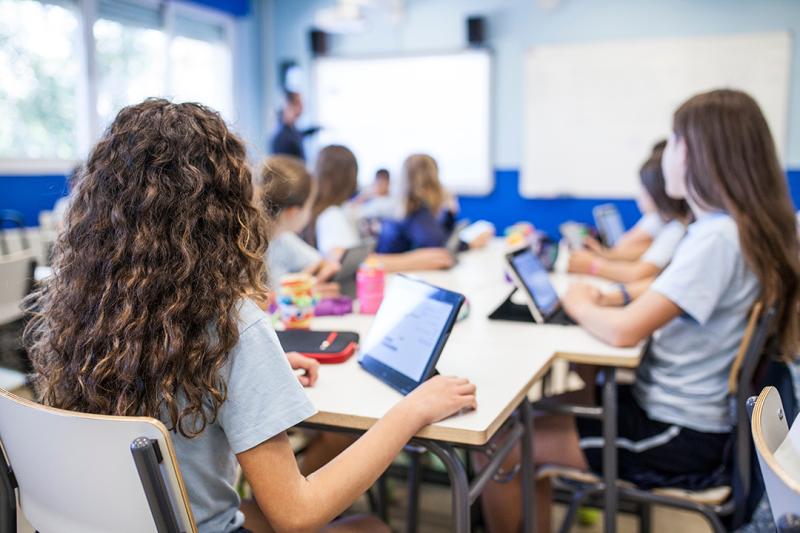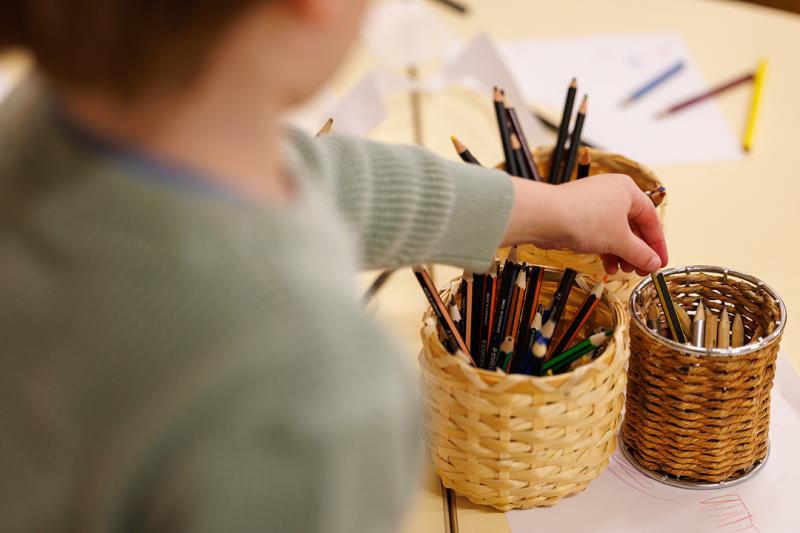The shared work of learning: Lifting educational achievement through collaboration

In The shared work of learning, authors Tom Bentley and Ciannon Cazaly argue that leaving the momentum of educational improvement to the status quo will result in widening inequality and stagnation in Australia.
Through a detailed analysis of three school systems, the authors demonstrate why collaboration is poised to deliver the next big wave of gains in education.
Key findings on lifting educational achievement through collaboration
Overall, student performance in Australia is not improving. But some schools in Australia, serving highly disadvantaged students and families, are successfully using collaboration to support student achievement.
Common features of the practices in these diverse schools can be applied to strategies for wider, systemic change.
This research examines how the schools and their partners use:
- Professional collaboration to support, sustain, evaluate and refine professional learning, and to access expertise, data and relevant practice.
- Local collaboration with other schools, universities, employers and community organisations to provide structure and resources for student achievement.
- Collaboration with students, parents and local community to build trust and social capital.
Collaboration – the sharing of effort, knowledge and resources in the pursuit of shared goals – is created through a wide range of flexible, trust-based relationships.
The high impact schools featured in this research:
- actively seek connections and resources that create value for students
- develop ‘local learning systems’ to translate connections and resources into concrete actions
- apply a consistent rationale, focused on student learning, to choose and prioritise collaborative projects and relationships.
Background
This report builds on evidence that an over-reliance on individual school performance, and competition to enrol high-status students, is worsening the problems of inequality and fragmentation.
The researchers assert that something different is needed to lift the achievement for all students and make progress in the face of these pressures.
Supporting collaboration effectively for the purpose of student learning is the overwhelming strategic priority for education policy and management.
This research project was developed to identify, strengthen and spread knowledge about how schools collaborate effectively with families, community agencies, business and other groups to improve student learning and achievement.
The project is a collaboration between Mitchell Institute and the Centre for Strategic Education, and involves three case studies: Parafield Gardens High School, South Australia; Dandenong West Primary School and St Anthony’s School Noble Park, Victoria; and Canley Vale High School, New South Wales.
It was jointly funded by Mitchell Institute, the Department of Education and Child Development, South Australia, the Department of Education and Training, Victoria, and the Department of Education and Communities, New South Wales.
Aim
The report identifies how high impact schools are using collaboration to achieve sustained improvement in student outcomes in disadvantaged communities. The report aims to:
- Analyse successful collaborations across schools, families, community agencies, and business to understand what factors are critical to their success, including the role of education systems.
- Identify actions for policy and practice and shape an agenda for testing them experimentally in schools and communities.
- Create a widely recognised body of knowledge about what works in educational collaborations.
Method
This report synthesises international literature and research evidence, with the findings from case study schools in three Australian school systems - New South Wales, South Australia and Victoria.
It is the job of the system to think about the whole student – but different methods, and different structures, are needed to make that a reality.
The case studies were identified by education departments as low socio-economic schools, achieving positive outcomes and displaying a range of collaboration models including: teacher-to-teacher; school-to-school; school-to-community; school-to-agencies; and knowledge and innovation networks.
Using site visits and education systems analysis, the authors focused on core local and system level research questions.
Results
The report’s results are in two parts: key features of collaboration and an agenda for systemic change.
Key features of collaboration
The researchers define seven key features of collaboration for learning which explain the positive impact of collaboration.
1. Shared purpose: The strength of commitment to student learning is a distinguishing feature in case study schools.
2. Combining longevity and energy in staffing: All case study schools showed a distinctive combination of long-serving senior teachers with younger, newer staff.
3. Collaborative leadership: Schools displayed sustained leadership commitment to growing collaboration in ways that further a coherent direction for schools and communities.
4. Community trust, professional trust: All sites invested significant time in building trust and social capital among both professionals and their wider communities.
5. Drawing on external expertise: All the case study schools reached out to find and draw on specialist knowledge to build up the skills and effectiveness of their own teams.
6. Permeable boundaries: Schools maintained clear structures and routines that were also open to wider ideas, people and contributions.
7. Co-evolution of wellbeing and attainment: All case study schools work to create a positive long term relationship between wellbeing and attainment.
An agenda for systemic change
Collaboration is a missing ingredient in education system design. The report presents an agenda for harnessing the educational power of collaboration at scale, through actions designed to run across whole systems.
The researchers find a shift in strategic emphasis is needed, and outline in the report recommendations for policy and action for systemic change.
Priority 1. Identify and make visible learning needs of students.
Actions:
- Identify visible learning goals
- Dedicate resources to learning need.
Priority 2: Build platforms for professional collaboration.
Actions:
- Every school needs a ‘home group’
- Every teacher should have a ‘home group’ too
- Schools should get support to consider ‘twinning’ and ‘federation’ where there is a clear student-led rationale.
Priority 3: Grow community voice.
Actions:
- Dedicate funding for cross-school community workers
- Include student voice in decision making
- Develop at least three ‘open access networks’ for every local government area.
Priority 4: Share pools of data.
Actions:
- Remodel public sector data and evaluation structures
- Build common standards for analysis, data security and categorisation
- Create data platforms to support sharing between agencies and schools in ‘many to many’ relationships.
Priority 5: Restructure governance around learning.
Actions:
- Develop regional collaborative structures – working with health, tertiary education and employers
- Increase the use of challenge-based funding
- Encourage Development and Research partnerships.
Conclusion
The shared work of learning demonstrates that education is a complex, adaptive system and set of relationships through which a wide range of people and activities are coordinated to create more than the sum of its parts.
The report concludes that education systems can create a cumulative process of change, building new capabilities to work for the specific needs and contexts they serve. In doing so, education systems will move towards becoming learning systems within which:
- All students learn.
- The learning outcomes created by the system are diverse, and they are all valued outcomes, ranging from formal measures of cognitive development to collaborative, problem solving skills used in the community.
- The system functions and develops through many to many relationships, not primarily through vertical hierarchies.
- Resources are directed towards learning need: with money, professional capability and community effort focused on those students who can benefit most from them.
- There are system-wide cycles of learning.
The report finds that embracing and harnessing collaboration could create the next big wave of gains in education. These gains are essential to prevent the slide of our education system into increasing inequality, and to create better outcomes for every student.
Promoting collaboration as a vehicle for change requires a radical shift in policy emphasis and political language. It concludes that change does not rest on a single intervention or ‘lever’, but requires the establishment of new system-wide capabilities from the local-level change that is already lifting educational achievement in some low socio-economic communities. The good news is that this work is already happening. The challenge is how to make it count for every student.
Authors
Tom Bentley is a writer and policy adviser and a former Deputy Chief of Staff to Julia Gillard, Prime Minister of Australia. Tom was Director of Demos, an independent think tank based in London and is currently an adviser to the US education program at the Bill and Melinda Gates Foundation and principal policy adviser at RMIT University. He has also worked as special adviser to David Blunkett, UK Secretary of State for Education, and as Executive Director at Victorian Department of Premier and Cabinet.
Dr Ciannon Cazaly is a social policy researcher. She has contributed to research projects and policy analysis within the fields of teaching and learning, higher education, sport, and Australian politics.



